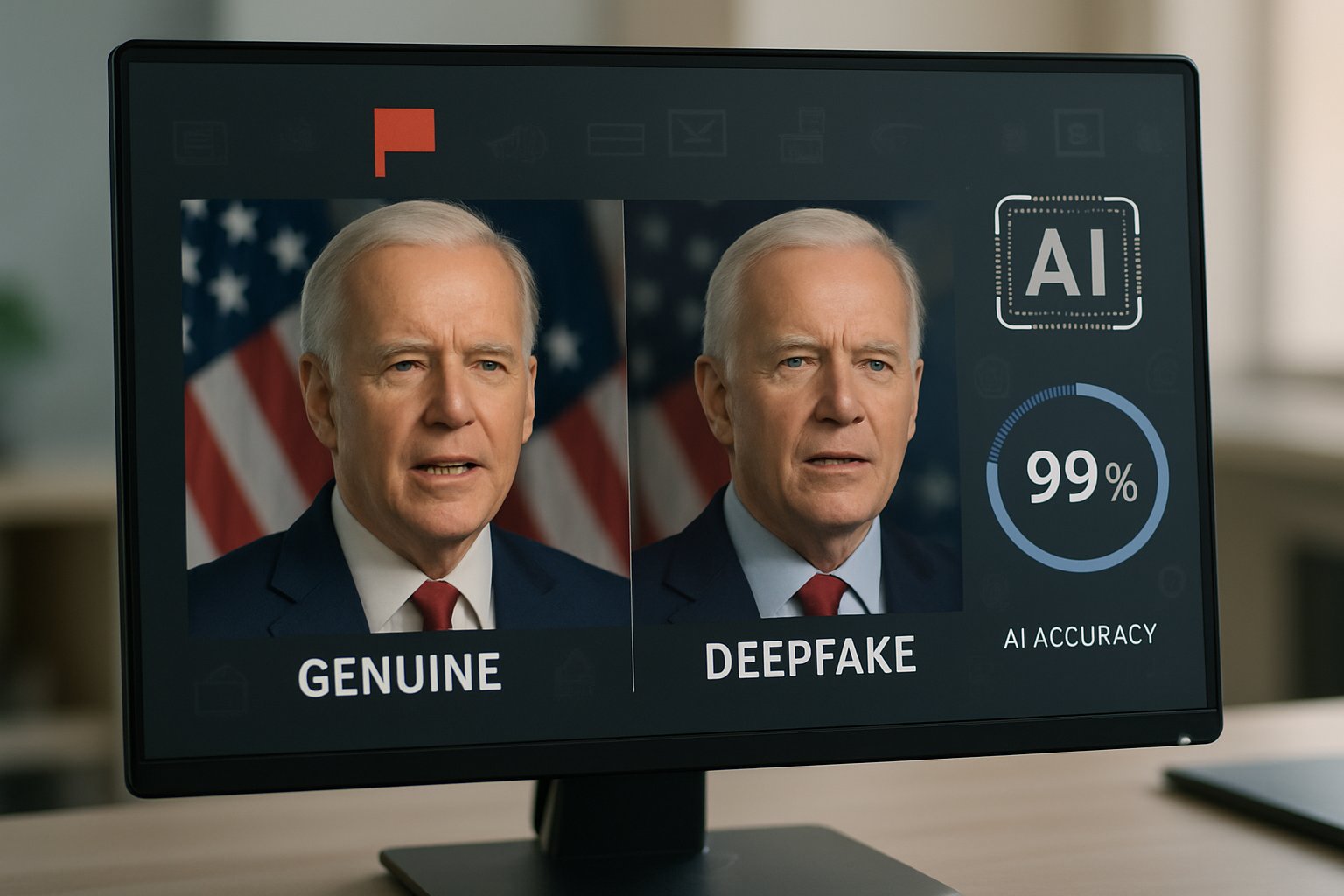
AI CERTS
9 hours ago
Deepfake Detection Claims Face Real-World Election Tests
Along the way, it weighs impact on Media Integrity, Elections, and platform Security. Moreover, it highlights certifications that strengthen practitioner readiness. Read on to separate marketing hype from measurable results. Subsequently, you will gain actionable criteria for vetting any future vendor claim. In contrast, ignoring due diligence could amplify misinformation during critical elections.
Deepfake Detection Claims Scrutinized
Vendor websites trumpet near-perfect accuracy metrics. Moreover, marketing decks highlight glossy charts without independent footnotes. The phrase Deepfake Detection appears beside bold 99% badges, implying courtroom-grade certainty.

Investigative reporters from the Washington Post sampled several such tools. However, they discovered missing methodology details and private datasets. Hany Farid cautioned that overstated confidence can worsen disinformation, not cure it.
Consequently, professionals must demand metrics, confusion matrices, and dataset provenance before trusting any claim. Without transparent Deepfake Detection audits, promises remain aspirational marketing copy. These lessons underline the gap between glossy brochures and field performance.
Marketing materials alone cannot guarantee operational accuracy. However, robust evidence can close that credibility gap and lead us to real benchmarks. The next section explores how political ad datasets challenge these lofty numbers.
Benchmarking Political Ads Data
Academic teams built new in-the-wild corpora capturing compressed, cropped, and re-encoded campaign spots. Moreover, the Deepfake-Eval-2024 benchmark exposes dramatic accuracy drops among leading detectors. Average scores hover near 66%, far below advertised levels.
When researchers tested Deepfake Detection on these messy samples, false positives surged. Consequently, legitimate ads risked removal, while sinister fabrications slipped through. Such mistakes threaten Media Integrity during heated Elections cycles.
In contrast, specialized audio models targeting robocalls showed stronger Deepfake Detection performance, yet still fell short of 99%. CSIRO scientists observed similar patterns across video datasets, underscoring modality differences. Therefore, modality, compression, and generator diversity all influence success rates.
Realistic political samples remain the toughest hurdle for current detectors. Subsequently, regulators intensify pressure on platforms to label altered content reliably.
Regulatory Pressure On Platforms
Lawmakers worry that synthetic ads can mislead voters within hours. Therefore, the FCC is drafting rules requiring clear AI disclosures in broadcast spots. Meta and Google already mandate labels for manipulated images and voiceovers.
However, these rules shift liability onto hosts when detectors misfire. False positives could silence authentic speech, raising Media Integrity concerns. Precise Deepfake Detection is essential to balance Security with free expression.
Platforms now pilot human-in-the-loop review to validate algorithmic flags. Moreover, they coordinate with election watchdogs to share threat intelligence.
Policy momentum will accelerate technical adoption regardless of present shortcomings. The following section maps the expanding vendor ecosystem answering that demand.
Current Vendor Market Landscape
Investment in detection startups reached $200 million last year, according to PitchBook. Deep Media, Reality Defender, and Pindrop headline the crowded field. Meanwhile, nonprofits like TrueMedia.org aggregate multiple engines for newsroom use.
Each company advertises proprietary Deepfake Detection pipelines trained on controlled datasets. However, only a few let third parties probe code or supply raw confusion matrices. Consequently, due diligence remains labor-intensive for procurement teams focused on Elections Security.
Competition fuels innovation yet also inflates marketing rhetoric. Next, we examine technical hurdles that still block consistent field accuracy.
Key Technical Gaps Persist
Generative models evolve monthly, introducing unseen artifacts that fool static classifiers. Moreover, adversaries can add noise, compression, or subtle warping to bypass detection. Researchers observe detector accuracy decays within weeks of model updates.
Robust training requires continuous sampling from social platforms and fresh synthetic generators. Yet many vendors refresh Deepfake Detection models quarterly at best, leaving exposure windows. In contrast, adversaries iterate daily, widening the gap.
Technical drift underscores the need for rigorous certification and ongoing audits. The next section outlines pathways to strengthen resilience and trust.
Roadmap For Reliable Adoption
Organizations should begin with risk mapping across content workflows. Subsequently, they must select detectors matching modality and latency requirements. Hybrid systems combining algorithms and forensic analysts improve Media Integrity during Elections.
Professional Certification Pathways Forward
- Demand independent Deepfake Detection results on in-the-wild datasets.
- Review false positive rates relevant to platform Security policies.
- Schedule quarterly red-team tests before national Elections periods.
- Upskill staff through the AI+ Security Level 2™ certification.
Additionally, professionals can deepen expertise via the AI+ Security Level 2™ program. This credential validates threat modeling, content forensics, and governance alignment.
Following these steps bolsters operational trust and compliance. Nevertheless, continuous improvement remains vital, as we conclude next.
Deepfake Detection continues evolving amid mounting regulatory and commercial pressure. Moreover, independent benchmarks reveal gaps that vendors must close to protect Media Integrity, Elections, and platform Security. Consequently, procurement teams should demand transparent metrics, real-world tests, and certified expertise. By applying the guidelines above—and pursuing the AI+ Security Level 2™ path—readers can navigate a noisy market with confidence and help safeguard democratic discourse.



